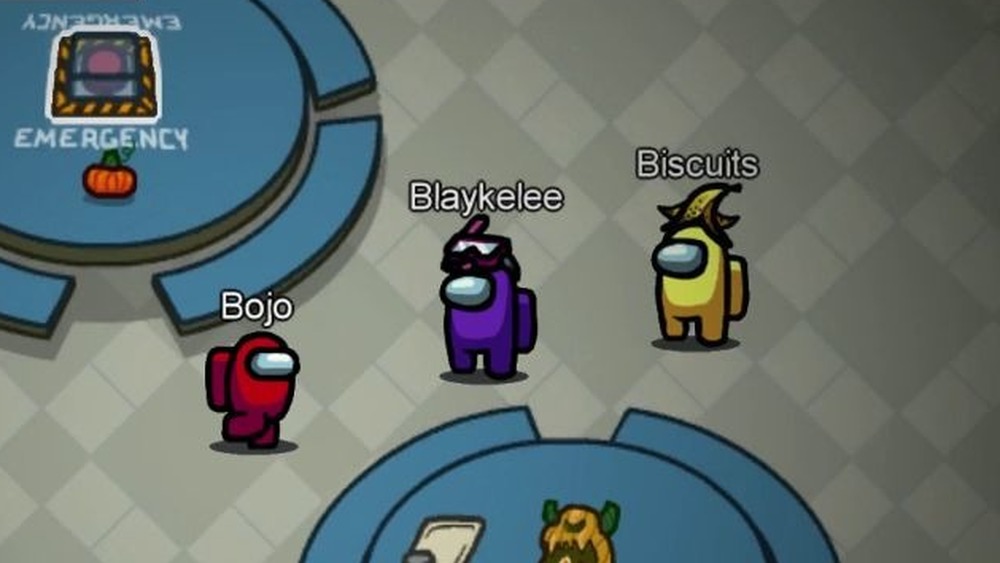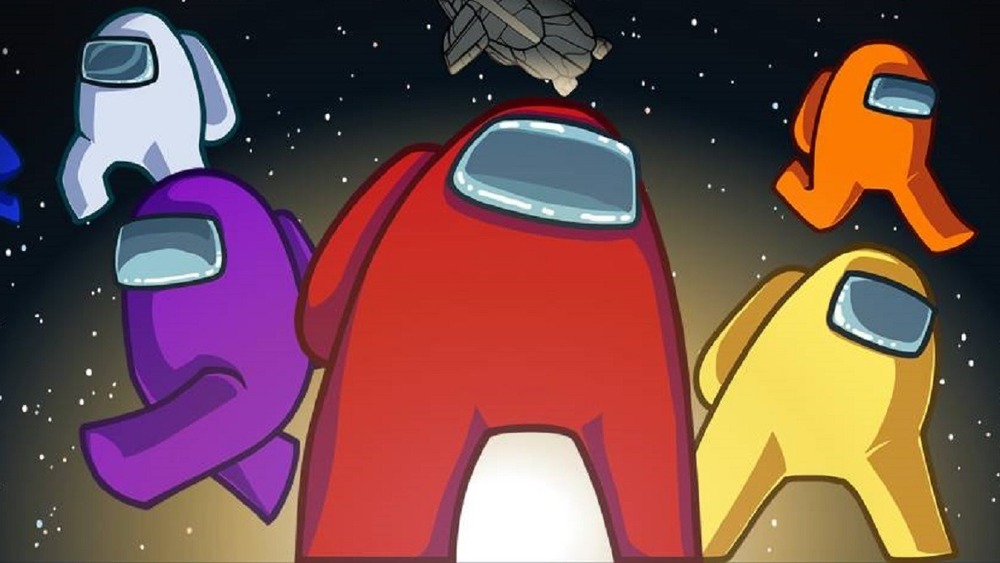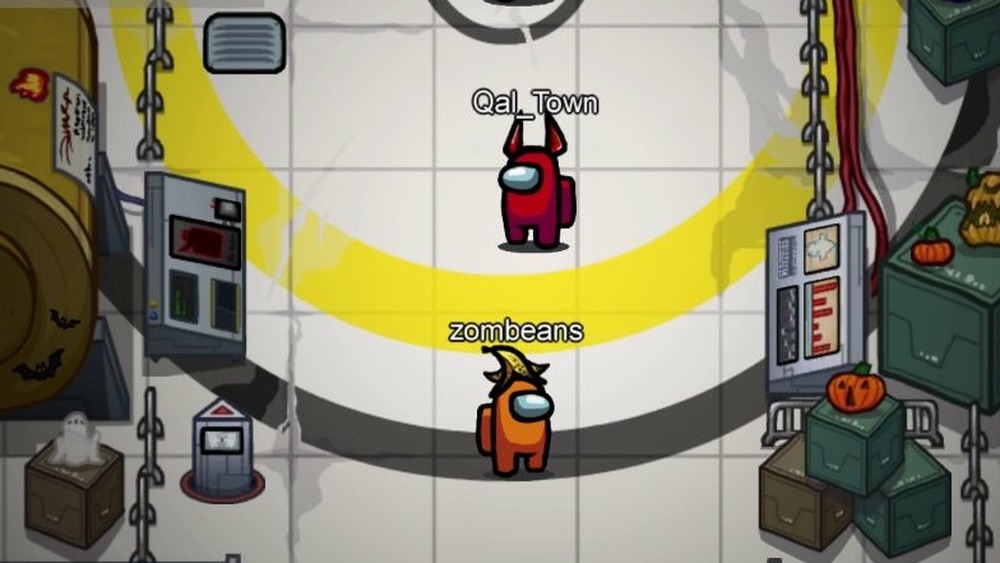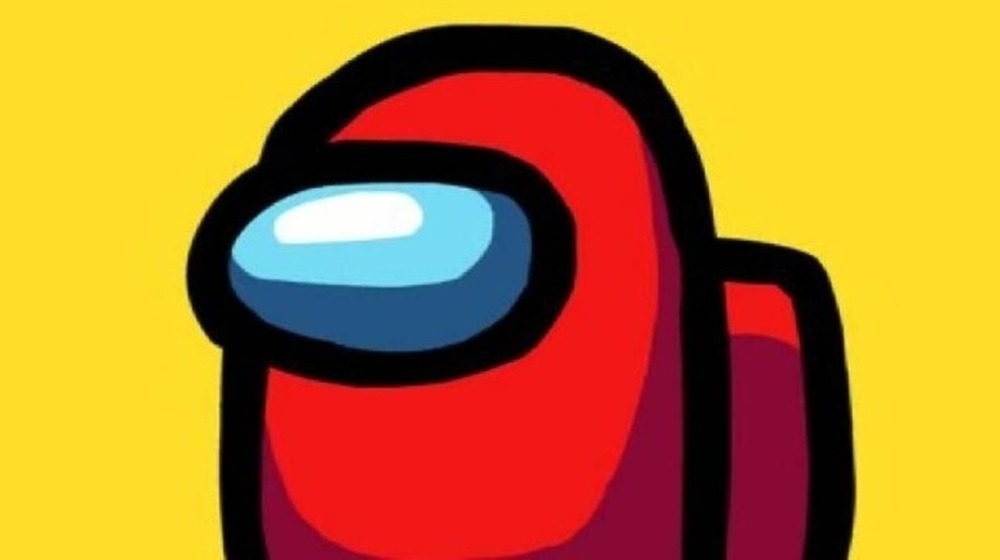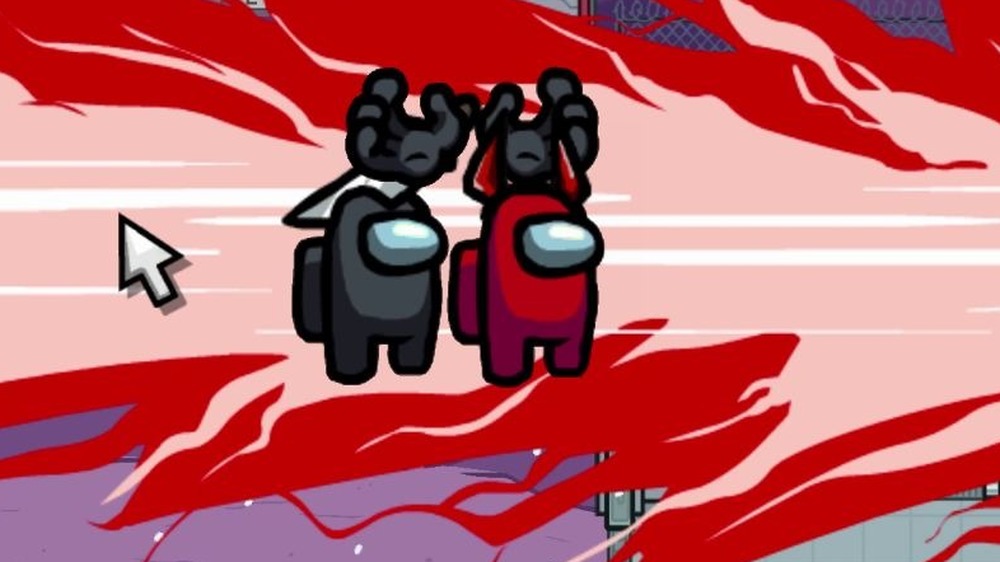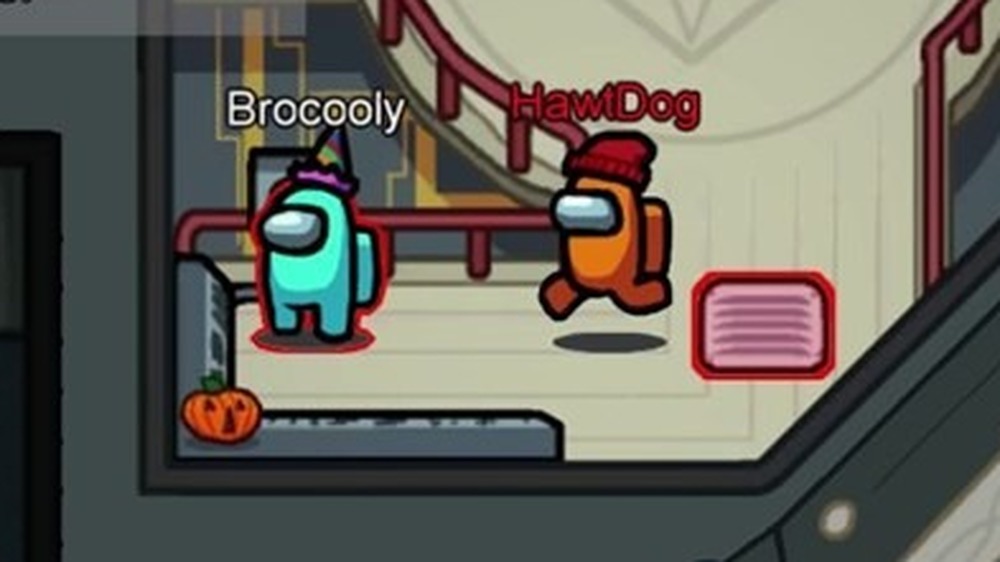The Untold Truth Of Among Us
Among Us became one of the biggest stories in video games in 2020. This little indie title seemed to have everything fall its way in becoming one of the biggest games around – the pandemic shutdowns had people desperate for social interaction, while the quirky art style and "simple rules hiding a lot of complexity" made it accessible and approachable for gamers of every ilk.
Plus, it's just fun to trick your friends.
Generally, only a few games a year break free of the video game world into bigger pop culture, and the little space beans of Among Us have shown that they're keen for the spotlight. Mainstream news outlets like CNBC have even taken notice, writing up helpful explainers that highlight aspects of the game and why it has become such a phenomenon.
We're giving you a little more credit than that. It's time to dig into some of the fun facts you may not know about developer InnerSloth's breakout hit. This is the untold truth of Among Us.
A sequel was announced and quickly unannounced
Even with all of the success that Among Us has found, the development team remains small. As of this writing, InnerSloth's website only lists three people working for the company, and they all wear several hats (and it seems likely they probably all do a little bit of everything). As such, the team needs to be very careful about how it distributes its time and focus, and what comes next seems like a bit of a mystery.
A sequel to Among Us seems like the natural next step, and that was InnerSloth's plan originally. The game was getting so popular that the outdated nature of its code was starting to feel the strain. However, InnerSloth decided not to continue forward with sequel development in September 2020. Among Us was so popular and was continuing to grow, so the small team decided to shift its focus and keep improving the game while its popularity was still so high.
A bigger developer would be working on a sequel to a success like Among Us without question, but part of the charm of the game lies in its small-scale nature. Hopefully InnerSloth keeps that charm as they continue to expand their playerbase.
The game's working title shows off its inspiration
Part of the central draw of Among Us lies in how simple the concept is. People love trying to follow clues in pop culture to figure out an embedded spy or traitor, and Among Us capitalizes on that perfectly. There aren't a ton of examples of video games that successfully implement this mechanic, but another world of gaming has been doing it well for decades: board games.
The tabletop-savvy have long known of the draw of the "hidden identity" genre, with plenty of games encouraging you to lie and trick your fellow gamers. One of the oldest and best known is Mafia, also known as Werewolf. In it, a majority of the group tries to figure out who the "bad guys" are before time runs out and they are picked off one by one. So... exactly like Among Us.
In fact, players aren't the only ones who have noticed the similarities. InnerSloth also seem to know it was just putting a fancy coat of paint on Mafia – the game's directory on mobile devices refers to it as Space Mafia.
Off to a slow start
Multiplayer-only games like Among Us generally can only last as long as people are playing. Maintaining a playerbase is literally integral to the game, so it isn't going to last long if no one is playing.
Well, most of the time.
Among Us really only gained major popularity in 2020, but it was actually first released all the way back in June 2018. For a small indie developer like InnerSloth, even the early numbers seem a bit underwhelming. One of the developers took to Twitter to show the evolution of the game in terms of player count. The first few months, Among Us was lucky to see two dozen users per day. Even by early December, Among Us was topping out around 200 players per day. That changed when a few popular streamers in Korea and Brazil started streaming it, bumping the number up to almost 2,000 in mid-December.
Among Us settled back down after that, mostly flying under the radar until around the summer of 2020. The game then completely exploded in popularity due to a combination of factors. Not bad for a three-person development team.
Military streams got in hot water with it
There has been a bit of controversy surrounding the U.S. military's presence on Twitch, and especially in the way it communicates with viewers. The platform has been used as a way to possibly reach new recruits, but the military may not have been expecting hordes of people to ask about war crimes in the chat while they play. Plenty of questions have been raised about freedom of speech – and why military branches were recruiting through the streaming platform – when the moderators on the channel started banning the offending viewers.
Military streamers also stumbled into some Twitch controversy while streaming Among Us. During one stream, several viewers noticed some of the in-game players were using some extremely sus names. Two were named 'Nagasaki' and 'Japan 1945,' referencing the U.S. dropping atomic bombs and killing hundreds of thousands of civilians at the end of World War II. Yet another player was named 'Gamer Word,' slang used to reference a racial slur and get around Twitch's Acceptable Use policies.
This group of players clearly knew what was going on, and the channel's mods made fun of viewers who called them out. Maybe it's time for another emergency meeting?
The future of politics?
Not every stream by a government entity needs to be filled with controversy. Take Representative Alexandria Ocasio-Cortez, who took to Twitch in October 2020 to play Among Us alongside fellow Representative Ilhan Omar and a host of popular streamers like Pokimane, HasanAbi, Jacksepticeye and Dr. Lupo.
AOC streamed for nearly three and half hours, rooting out imposters and effortlessly chatting with audience members about a wide range of topics. She discussed the upcoming election and used her team of moderators well, directing viewers to information about voter registration and their polling places. However, the stream wasn't dominated by political discourse, and AOC set some records along the way.
Her stream was the most popular ever by a new streamer, with a maximum viewer count around 439,000 people. She also gained 600,000 followers over the course of the stream. Not bad for a newbie!
As of this writing, AOC has only streamed twice on Twitch. The second time she played Among Us on her stream, she was joined by a few other popular streamers, as well as Canadian politician Jagmeet Singh, who is the leader of the Canadian New Democratic Party. Keep your eyes peeled – it seems likely she'll be back at it again in the future.
It's only still around because the tiny development team stuck it out
If you're one of the (very) few who downloaded Among Us when it first released, you'd be hard-pressed to imagine it taking over Twitch and pop culture in the way it has. The gameplay itself wasn't much different at that time, but there was one major hurdle in its way to becoming an online multiplayer phenomenon: it didn't have online multiplayer.
Upon its original release, Among Us was only for local multiplayer – the idea was a group of friends could get together and play on their phones, similar to how you'd play Werewolf. In an interview with Kotaku, the developers shared that the main feedback received from players was to add online multiplayer and to release a version for Steam, rather than only sticking to mobile devices. InnerSloth did so by the end of 2018, and the game's moderate success was enough to justify continued development.
The developers said they "should have quit several times," strictly from a business perspective. However, InnerSloth's members had enough savings to run the game for several months, and continued the labor of love. Considering the success Among Us has found, it's a good thing InnerSloth stuck with it.
The sus origins of 'sus'
Among Us' extreme rise in pop culture relevance brought the standard internet memes and coattail riders you'd expect. One unexpected side effect is how often you hear the word "sus," short for "suspicious." In a game all about identifying a traitor, being labeled as "sus" can be difficult to shake, and will often result in a trip out of the airlock.
This shorthand has actually been around for way longer than just a few years, however. Inverse writes that shortening "suspicious" dates back to the 1930s, when British police would use the word to mean working to uncover evidence. You may have heard the phrase "sussing something out," meaning to uncover details that are otherwise hidden. "Sus Law" was a nickname for a British law to give police the right to stop and search anyone who seemed suspicious. Over the years, Sus Law was challenged for giving police an excuse to target racial minorities, and was the driving force behind the Bloody Sunday riot in 1981.
Thankfully, the way the word is used in Among Us is a mite more playful than its origins.
The Eris Loris attack
When a tiny development team is tasked with maintaining a suddenly popular game, there can be some speed bumps in the road. Among Us seemingly hit a lot of them, as the game's exponential rise was often too much for the three-person team (and its servers) to handle. The worst hiccup for Among Us came from a hacker, however, who held many players hostage with a targeted attack that spammed messages and threatened to brick devices.
In October 2020, players reported that their Among Us games were being flooded by spam messages in the chat, telling players to subscribe to a certain YouTube channel, or else face consequences. Eurogamer writes that the channel in question, Eris Loris, featured videos about game cheats, leading to speculation that the attack was solely a publicity stunt to get more eyes on his channel and videos.
InnerSloth reacted quickly and released an emergency patch, but a game as wildly popular (and attracting as many casual users) as Among Us will probably see more of them before its time in the spotlight is through.
Could be considered the most popular game... of all time
The number of players logging into Among Us is really impressive, especially when you remember what a tiny development team is working behind the scenes. However, if the numbers released at the end of 2020 are any indication, Among Us has some truly astounding player counts, and one could even make an argument that it is the most popular game ever.
According to research from SuperData, reposted by InnerSloth, Among Us had half a billion unique, active users in Nov. 2020. If you read a game's popularity as "unique monthly players," that makes Among Us far and away the most popular game of all time.
A big part of the draw is how inexpensive it is to jump in – Among Us is free on mobile devices and only $4.99 on Steam. As its pop culture footprint grows more and more, a larger number of people are going to give it a shot due to the low cost of entry. Of course, there are a lot of metrics to measure how popular a game is, and it will be interesting to see how long Among Us can stay on top of the video game world.


